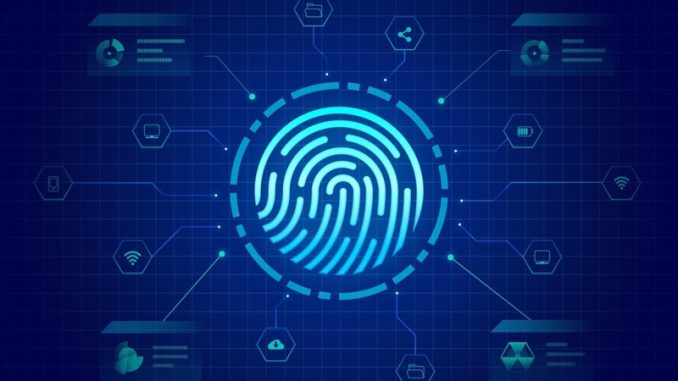
In a period marked by the digital transformation of society, the importance of identity verification cannot be overstated. The rapid growth of online activities, from banking to social media, has made us more vulnerable to identity theft and cyberattacks than ever before. It is in this context that biometric technology emerges as a beacon of hope.
The article delves into the exciting world of biometrics, where the future of identity verification is being reshaped. Biometrics offers the promise of not only bolstering security but also enhancing convenience, making it a topic of immense relevance in today’s world.
The Evolution Of Identity Verification
In the not-so-distant past, identity verification relied heavily on traditional methods like usernames and passwords. However, as cyber threats have evolved, these methods have proven vulnerable to hacking and impersonation. The evolution of identity verification has been driven by the need for more secure and reliable methods.
Biometric technology, with its foundation in unique physical or behavioural traits, represents a significant leap forward. Unlike traditional credentials that can be forgotten, stolen, or guessed, biometrics such as fingerprints, facial recognition, and iris scanning are highly resistant to fraud.
This evolutionary shift is not only a response to the limitations of the past but also a proactive approach to enhancing security in a rapidly digitizing world. By embracing biometrics, we move away from easily compromised methods towards a more secure future of identity verification.
Understanding Biometrics
Biometrics is the science of using distinctive personal attributes for authentication. These attributes can be categorized into physiological (e.g., fingerprint, iris patterns) and behavioural (e.g., voice, typing rhythm) traits. What sets biometrics apart is its reliance on features unique to each individual. For example, no two people share identical fingerprints or facial features. Biometric systems capture and store these traits in a secure database, allowing for quick and accurate identity verification.
Unlike traditional credentials, such as passwords, which can be forgotten, stolen, or shared, biometrics are tied directly to the person they belong to. This inherent uniqueness makes biometric technology a robust and secure method for confirming identity. As we explore the world of biometrics, it becomes clear that it offers not just enhanced security but also increased convenience.
Real-world Applications
The adoption of biometric technology in real-world applications is rapidly expanding across various sectors. One of the most visible examples is in smartphones, where fingerprint and facial recognition technologies are used to unlock devices securely. Financial institutions have also embraced biometrics as a means to enhance account security.
In airports and border control, biometrics are employed to expedite passenger identification and improve security measures. The healthcare industry has integrated biometrics to ensure secure access to medical records and patient identification.
These real-world applications showcase the versatility and effectiveness of biometric technology in providing a seamless and secure identity verification experience. As we delve deeper into these applications, it becomes evident that biometrics is not just a technological advancement but a transformative force shaping our daily lives.
Advancements In Biometric Technology
Advancements in biometric technology have propelled it into the forefront of identity verification. One of the key drivers of these advancements is artificial intelligence (AI). AI algorithms are constantly improving the accuracy and reliability of biometric systems.
They can adapt to changing conditions, such as variations in lighting or pose, making biometric authentication even more robust. Machine learning enables biometric systems to continuously refine their models, reducing false positives and negatives.
Additionally, hardware innovations, such as improved sensors and cameras, have contributed to better data capture. These advancements collectively result in biometric technology that is not only highly secure but also user-friendly. As technology continues to evolve, biometrics will remain at the cutting edge of identity verification solutions.
Security And Privacy Concerns
While biometric technology offers significant advantages, it also raises legitimate security and privacy concerns. The primary concern revolves around the security of biometric data itself. Since biometric data is irreplaceable (you can’t change your fingerprint like a password), any breach or misuse could have severe consequences. Therefore, robust encryption and secure storage of biometric templates are paramount.
Additionally, concerns about user privacy and data sharing have emerged. To address these issues, organizations must implement stringent data protection measures, transparent data usage policies, and consent-based approaches. Balancing the undeniable benefits of biometrics with these concerns is a crucial aspect of its widespread adoption. It is essential to strike a balance where security and privacy coexist harmoniously in the realm of biometric technology.
Can Biometric Data Be Hacked Or Misused?
While no system is entirely foolproof, the encryption and security measures employed in biometric technology make it extremely challenging to hack. Unauthorized access is highly improbable.
How Does Artificial Intelligence Contribute To Biometric Advancements?
Artificial intelligence enhances biometric systems by continuously learning and adapting to new patterns, improving accuracy and the ability to detect fraud attempts.
Are There Any Ethical Concerns Surrounding Biometric Technology?
Ethical concerns primarily revolve around privacy and data usage. Organizations must be transparent about how biometric data is collected, stored, and shared.
What’s The Future Of Biometric Technology In Consumer Applications?
Biometrics will likely become more integrated into our daily lives, from unlocking our homes to authorizing online purchases. Convenience and security will coexist seamlessly.
Conclusion
Biometric technology is reshaping identity verification, offering heightened security and convenience in a world increasingly reliant on digital interactions. As innovations continue, the future holds a promise of even more secure and accessible means of confirming our identities in a connected world.






Leave a Reply